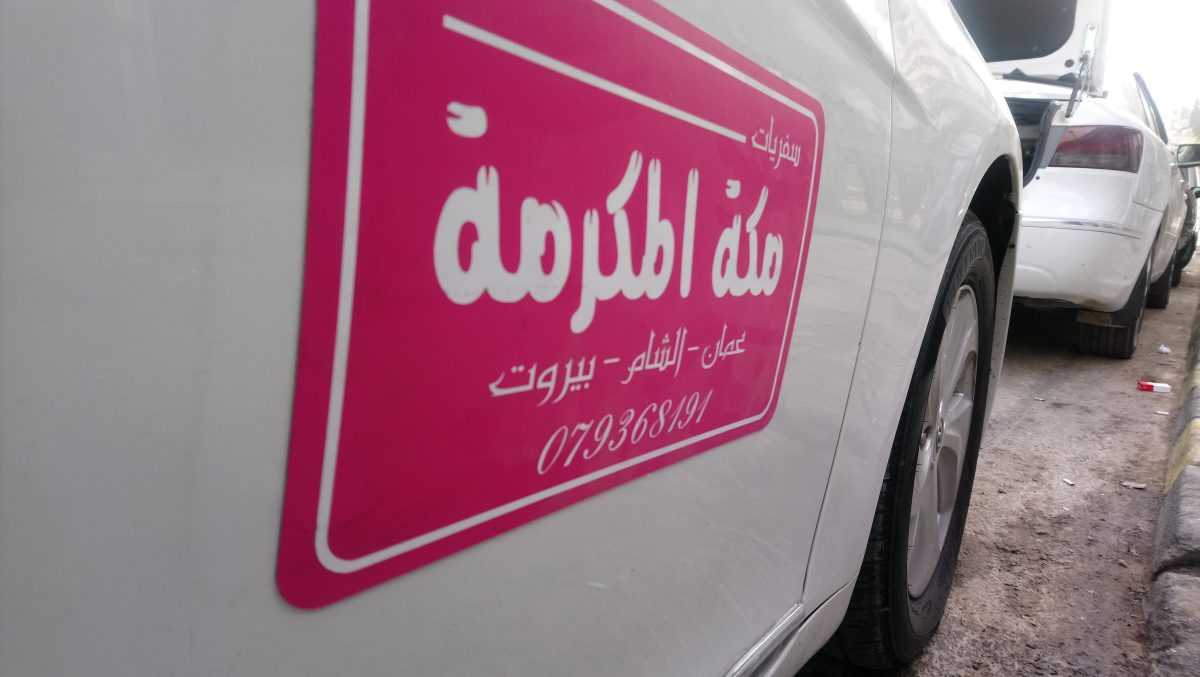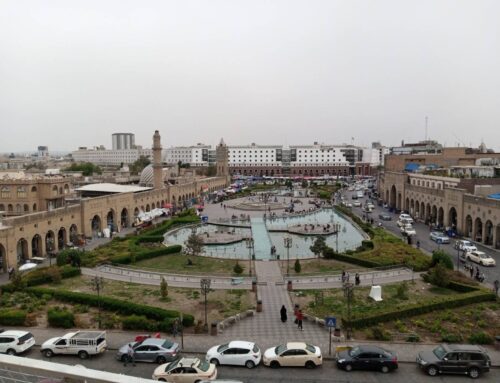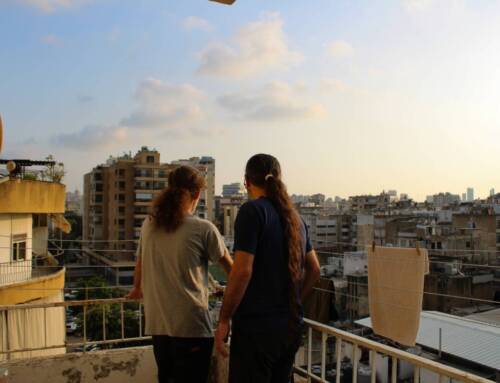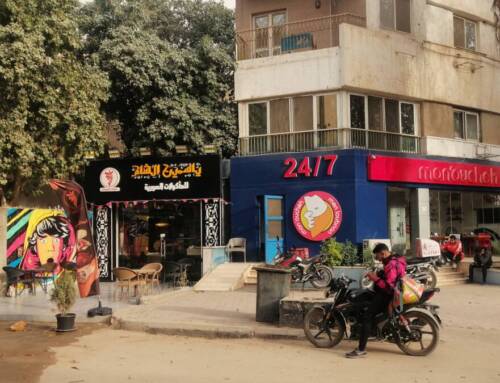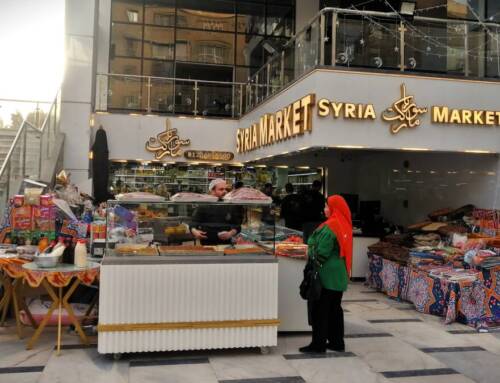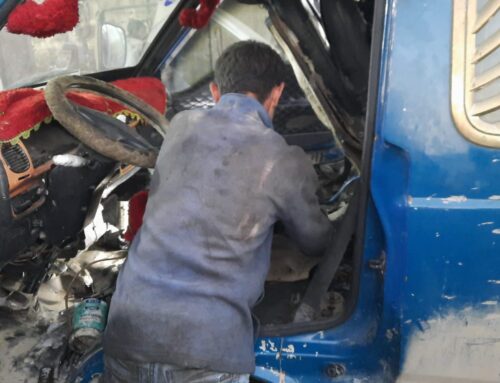‘To Damascus!’ After years of closed borders, bus and taxi routes linking Jordan, Syria return to business
A taxi, waiting for passengers in Amman’s central Abdali district […]
24 October 2018

AMMAN: The shabby-looking facades of travel agencies lining the streets of Amman’s central Abdali district serve as a subtle reminder of a Middle East that can sometimes feel like a thing of the past.
Faded banners and posters plastered over window-panes bear the names of destinations once accessible from the Jordanian capital by way of a network of buses and taxis that criss-crossed the region’s borders with relative ease: Beirut, Aleppo, Istanbul, Baghdad.
Much of that network fell apart after the Syrian uprising broke out in 2011 and later shifted to all-out war—sealing borders, pushing millions to flee their homes and bringing longstanding cross-border links between Syria and Jordan, including the tourism sector, to a halt. Countless jobs on both sides of the Syrian-Jordanian border were lost in the process.
Last week, however, the Jaber-Naseeb border crossing that links Jordan with Syria’s southwest reopened for the first time in three years, and the once-familiar servees taxis—or shared cabs—that used to ferry passengers from one side to the other are now back in front of Abdali’s rows of travel agencies, ready to head north.
Taxi drivers casually lean against sparkling white cars, calling out for passengers heading to a destination that has been next to impossible to reach for years.
“A-Sham!” they yell. “Damascus! To Damascus!”
Much of Syria is in ruins, and large areas are still outside the government’s control following a gruelling seven-year conflict. Even so, Syrians and Jordanians working in tourism and transport at either end of the 200-kilometer-long road between Amman and Damascus are now busy starting up business again after years of closed borders and economic malaise.
‘No one dared to go’
From the first days of the Syrian uprising in 2011, which initially broke out in Syria’s southern city of Daraa, historical trade routes between Syria and Jordan were badly impacted.
As fighting spread through Syria’s southwest, the first of two major gateways linking Syria and Jordan, the Ramtha-Daraa crossing, was shuttered in 2011, and thousands of taxi drivers and merchants were almost immediately put out of work. Towns and cities close to Jordan’s northern border, including Ramtha, would be particularly hard hit.
Even though the other crossing—Naseeb—stayed open, Jordanian travel agent Abu Muhammad recalls from the doorway of his dimly lit Abdali travel agency, passengers became increasingly hesitant to travel into what was fast becoming a war zone.
“The trip became dangerous,” he says. “Once the war broke out, no one dared to go.”

By 2015, with rebel groups advancing on the Syrian side of the border, Naseeb followed Ramtha’s fate. Thousands more people whose livelihoods depended on the Amman-Damascus route were put out of work, and a route that had facilitated billions of dollars in annual trade was cut off.
“If there’s no route to Damascus, there’s no work,” says Ziad al-Saqer, the owner of an Abdali travel agency sharing his name that runs bus and taxi trips from the district’s central station.
In the wake of the border closure, al-Saqer says, Jordanian travel agencies like his desperately shifted focus toward a narrow assortment of still-accessible destinations—including Saudi Arabia—that tend to revolve around seasonal tourism during holidays and weekends. It was a far cry from the daily departures to Syria.
“For eight years, we’ve been paying the necessities out of pocket in the hope that the border will open again,” al-Saqer tells Syria Direct. “And thank God, now it has.”
‘We’re back!’
After about a three-year pause in which his route shifted from Damascus-Amman to Damascus-Beirut, Syrian servees driver Abu Ammar drove south in his Syrian-licensed cab—still a rare sight in Jordan—last week and headed straight for Abdali.
“We’re back!” Abu Ammar tells Syria Direct, sitting in the open trunk of his car beside a single suitcase as he waits patiently for the three more passengers he needs to fill up the car before he can get going.
“[The route’s] now 100-percent secure.”
Abu Ammar asked that his real name be withheld in this report for security reasons.

Since Naseeb reopened, Amman is abuzz with talk about the reopened border. Local travel agencies have quickly turned to social media to advertise budget trips to Syria, while Jordanians who’ve already made the journey to Damascus have posted videos to Facebook.
In one post by Jordanian bus company JETT, thousands of Jordanian Facebook users tagged friends in the comments with serious—as well as sarcastic—hints at travel plans.
“Syria has returned, as has love and security,” read one promotional ad by JETT, which resumed its own daily service to Damascus on October 22.
However, Syrians and Jordanians working in the cross-border tourism sector—including drivers like Abu Ammar—tell Syria Direct that it’s still in its early days. The critical passageway between Amman and Damascus, which also served as a crucial economic link between the Gulf, Turkey and Europe beyond, remains in the first stages of a recovery that will likely take years.
Although officially operational again following a widely publicized opening ceremony on October 15, the Naseeb crossing is only open from 8 am to 4 pm each day, and long lines have reportedly formed at the border as Jordanians scramble to bring home cheap Syrian products like fruits, vegetables and cigarettes. Some travelers have made the trip to Naseeb only to be turned around when the gates shut at the end of the day.
Travel agency owner al-Saqer says limited hours at the border are contributing to the relatively small number of shared taxis that currently depart from his place each day—about four.
Taxi driver Abu Ammar, meanwhile, suggests that border restrictions on Syrian nationals are limiting the number of potential passengers he can take.
Thus far, Abu Ammar’s passengers—who pay 20,000 Syrian pounds (about $40) each way—have been a mix of Jordanians and some Syrians, although he says the latter group was made up of only businessmen looking for investments.
“I haven’t had any Syrian tourists yet because Syrians need security approval from the Jordanian consulate in Syria,” he says.
Jordanians, meanwhile, only need a valid passport as well as a military service document—proving they’ve registered for the military draft—to cross in private cars.

The discrepancy prompted Syrian parliamentarians to call for “reciprocity” in the treatment of Syrians wanting to cross the border, Syria’s pro-government newspaper al-Watan reported on October 22.
Even then, “matters at the border are still unclear,” says al-Saqer.
That was evident just up the road from his fleet of servees taxis, where a handful of prospective customers gathered around the ticket desk in the hope of finding space on a bus bound for Damascus.
“I’m 42 years old, so do I still need to have a [military] service record with me?”
“If I leave at noon, will I make it across the border?”
“When can I get a seat?”
The saleswoman could only definitively answer the final question.
“You’ll have to wait until next weekend,” she said—because the company’s two daily departures were fully booked for the coming days. At 10 Jordanian dinars (about $14) per ticket, the bus appears to be a more popular option—at least for now.
“Our work won’t go back to normal until the route itself is normal, and things return to the way they were in 2011,” says al-Saqer. “When that happens, the situation will be just fine.”

